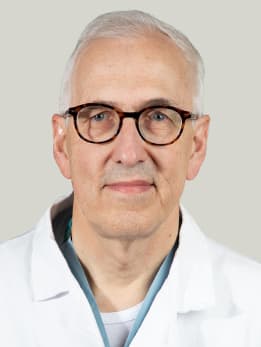After semitrailer crash, a trucker receives life-changing brain tumor diagnosis and 'awake' operation

For Donald Schwartz, his first and only seizure could not have happened at a worse time. A lead driver at a wholesale food distributor, he was headed back from a delivery when his right arm began to hurt so badly that he decided to pull over.
Cameras in his truck recorded what happened next: Schwartz experiencing a seizure and losing control of his 38,000-pound semitrailer. Unable to move, he watched helplessly as his truck jackknifed, plowed across three lanes of interstate highway and headed towards oncoming traffic. Somehow, the highway median managed to stop the vehicle; the last thing Schwartz remembers is the truck’s front hood smashing upwards as it hit the concrete barrier.
This was the accident that saved his life.
Brought by ambulance to the University of Chicago Medicine’s Emergency Department, an MRI revealed a large tumor nestling up to Schwartz’s motor cortex, the part of the brain that controls movement of arms and legs.
“The fact that this mass caused a seizure and exerted pressure on the motor cortex meant it had to be removed,” said UChicago Medicine neurosurgeon Peter Warnke, MD. “But considering the tumor had caused no other problems, any surgery needed to be done very carefully.”
When a tumor is situated in a part of the brain that regulates critical functions – in this case, movement of Schwartz’s left arm and leg – surgery is ideally performed while the patient is awake so that doctors can make sure they don’t injure the brain while removing tumor. In Schwartz’s case, the tumor was brain cancer, a stage 3 astrocytoma.
“My first words were ‘What can I do to beat this?’” recalled Schwartz, a father of two who lives in Oswego. “I’ve never backed down from any challenge. I truly believe you’re never given anything more than you can handle.”
Two days after his accident, Schwartz underwent an awake craniotomy to remove the tumor. First, he received sedation so that Warnke could remove part of his skull. Schwartz was then allowed to regain consciousness, at which point Warnke used a device known as an Ojemann cortical stimulator to determine which tissue could be safely removed alongside the tumor. It works by stimulating brain tissue with a mild electrical current; this artificial current blocks neurons in the tissue from transmitting their own electrical messages to the rest of the body.
“The patient is awake so that you can ask him to move his arm or leg,” Warnke explained. “If he can’t while you’re stimulating the tissue, you know you’re in a functionally important area.”
Warnke was able to remove all visible tumor, and two days later Schwartz was home watching the Super Bowl with his friends, bandages hiding nearly two dozen staples. He rebuilt strength in his left hand – an expected temporary weakness after the operation – by squeezing a rubber racquetball.

Schwartz also underwent six weeks of radiation treatment to target any remaining cancer cells. He’s now completing a one-year chemotherapy cycle of the drug temozolomide and receives a brain MRI check-up every two months.
In the meantime, Schwartz is back at work. Because he hasn’t had another seizure and the tumor that caused the initial seizure has been removed, he can continue to drive semitrailers, a job he’s loved doing for 29 years. Before going back, however, he asked his boss if he could see the damaged truck from his accident. Schwartz figured it would help him make peace with getting back on the road – and help him process his incredible fortune. He’d survived the crash with only scuffed knuckles and a sore shoulder; no one else had been hurt, and he was now a cancer survivor because of the cascade of events that had ensued.
“That truck saved my life in the accident, and without that accident, I would have never known about the tumor,” Schwartz said. “And if it had gone too much longer, I could have been dead.”

Peter Warnke, MD
Internationally renowned neurosurgeon Peter Warnke, MD, has performed more than 5,000 stereotactic surgeries and more than 2,000 brain tumor surgeries. Dr. Warnke provides neurosurgical care for the treatment of adults and children with movement disorders, epilepsy and brain tumors.
Learn more about Dr. Warnke